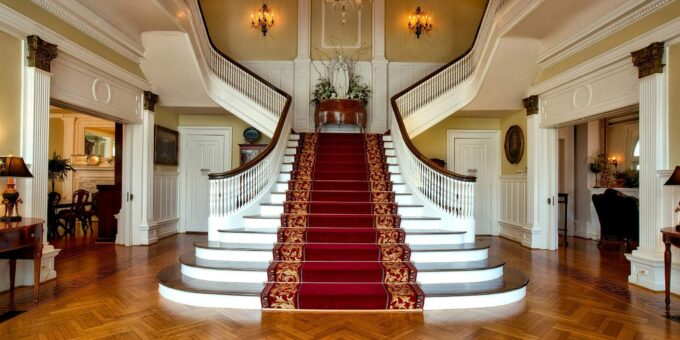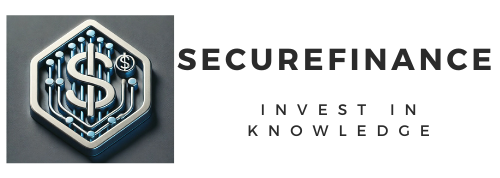
Luxury hospitality projects—think five-star resorts, branded high-end hotels, and boutique lifestyle properties—require financing on a scale that few other industries demand. The upfront capital often runs into tens or hundreds of millions of dollars, covering land acquisition, architectural design, construction, furnishings, branding partnerships, and operational costs until the property stabilizes.
With such massive investments, choosing the right loan becomes a make-or-break decision. A well-structured loan can ease cash flow pressures, enhance profitability, and protect the developer during uncertain economic cycles. A poorly chosen loan, however, can saddle the project with unsustainable debt, erode investor confidence, and even lead to foreclosure.
That’s why knowing how to compare loan options for luxury hospitality projects is critical. It’s not just about finding the lowest interest rate—it’s about assessing repayment flexibility, lender reliability, regulatory implications, and how the financing fits into the project’s long-term business model.
How to Compare Loan Options for Luxury Hospitality Projects
When evaluating financing for luxury hospitality, developers must consider the unique dynamics of the industry. Unlike other commercial real estate projects, hotels depend heavily on fluctuating demand, seasonal trends, brand reputation, and guest experience.
Comparing loan options means analyzing not just the cost of capital but also the alignment of loan structures with anticipated revenue streams. A resort in a seasonal destination, for instance, may need flexible repayment terms, while a city luxury hotel may prioritize long-term stability with fixed-rate financing.
In short, the right loan option is one that supports not only construction and launch but also sustains the property through market cycles.
Understanding the Luxury Hospitality Financing Landscape
Luxury hospitality financing is a diverse ecosystem that includes:
-
Commercial Banks – Traditional lenders offering structured hotel loans with moderate flexibility.
-
Private Lenders – Often more flexible but at higher interest rates.
-
Institutional Investors – Pension funds, private equity, and sovereign wealth funds interested in high-profile projects.
-
Government-Backed Programs – In some regions, incentives exist for tourism-related infrastructure.
The choice of lender often dictates the type of loan available and the terms of negotiation. Developers must align the source of funds with their project’s scale and timeline.
Types of Loan Options Available
Developers usually evaluate several financing tools when funding luxury hospitality projects:
-
Construction Loans – Short-term financing covering development and building costs.
-
Bridge Loans – Transitional financing between construction completion and permanent financing.
-
Mezzanine Financing – Hybrid debt-equity loans that provide higher leverage but at higher costs.
-
Permanent Loans – Long-term financing for stabilized hotels generating steady revenue.
Each option serves a different stage of the project and must be carefully compared against expected cash flows.
Key Factors to Evaluate in Loan Options
When comparing loans, the following criteria matter most:
-
Interest Rates – Fixed or variable rates impact long-term costs.
-
Repayment Terms – Length, structure, and flexibility of repayment.
-
Collateral Requirements – Hotels often require the property itself as collateral.
-
Flexibility – Ability to refinance or restructure in response to market changes.
-
Hidden Costs – Origination fees, legal costs, prepayment penalties.
A loan with a slightly higher interest rate but greater flexibility may be more valuable than the cheapest option with rigid terms.
Comparing Interest Rates Across Lenders
Interest rates are usually the first factor developers consider. However, comparing rates requires a deeper analysis:
-
Fixed vs Variable Rates – Fixed rates offer stability, while variable rates may start lower but carry risks during economic fluctuations.
-
Local vs International Lenders – International banks may offer competitive rates for iconic luxury projects, but they come with regulatory complexities.
-
Currency Considerations – For cross-border projects, currency risk can affect repayment affordability.
Developers should model different rate scenarios to stress-test their financial assumptions.
Repayment Structures for Hospitality Loans
Repayment terms significantly influence a project’s sustainability. Common structures include:
-
Amortizing Loans – Equal payments spread over time.
-
Balloon Payments – Smaller payments during the term with a large lump sum at the end.
-
Interest-Only Loans – Initially lower repayments, useful during the construction phase.
Choosing the right structure means aligning repayments with expected cash inflows once the property begins operations.
Loan-to-Value (LTV) Ratios in Hospitality Projects
Most lenders impose an LTV ratio—loan size relative to project value. For luxury hotels, typical LTV ratios range from 50–65%.
-
High LTV – Offers higher leverage but comes with stricter loan covenants.
-
Low LTV – Safer for lenders but requires larger equity contributions.
Developers must balance equity and debt to avoid overleveraging.
Debt Service Coverage Ratio (DSCR) Requirements
The DSCR measures the ability of hotel revenue to cover loan payments. Luxury hospitality projects often require a DSCR of at least 1.25–1.5.
Lenders use this metric to assess project risk. A strong DSCR not only improves loan approval chances but also provides room for unexpected downturns.
Risk Management in Loan Selection
Risk management is crucial when comparing financing. Developers must consider:
-
Currency Risk – For projects funded in foreign currency.
-
Economic Cycles – Luxury hotels are sensitive to recessions.
-
Operational Risks – Construction delays, cost overruns, brand underperformance.
Hedging strategies and contingency reserves should be part of the financing plan.
The Role of Equity in Financing Luxury Hotels
Equity complements loans and reassures lenders of the developer’s commitment. Equity funding may come from:
-
Private investors
-
Joint ventures with hotel brands
-
Institutional capital
A balanced debt-equity ratio improves financial resilience and investor confidence.
Construction Loans for Luxury Resorts and Hotels
Construction loans are short-term and high-risk. They cover land acquisition, building, and pre-opening expenses.
Pros:
-
Provides necessary upfront capital.
-
Flexible drawdowns aligned with construction phases.
Cons:
-
High interest rates.
-
Requires strong collateral and guarantees.
Developers must compare lender flexibility in disbursements and repayment grace periods.
Bridge Loans for Transitional Hospitality Projects
Bridge loans provide funding between construction completion and permanent financing.
Pros:
-
Helps cover operational gaps.
-
Quick access to funds.
Cons:
-
High interest and short tenure.
-
Not sustainable as long-term debt.
Bridge loans are best used when permanent financing is delayed.
Mezzanine Financing in High-End Developments
Mezzanine debt blends equity and traditional loans. It allows higher leverage but comes at higher cost.
Pros:
-
Fills financing gaps without diluting ownership entirely.
-
Flexible repayment linked to project performance.
Cons:
-
High interest, often 12–20%.
-
Can involve partial equity transfer.
Developers compare mezzanine options carefully to avoid overburdening cash flows.
Permanent Financing for Stabilized Luxury Properties
Permanent loans are long-term financing solutions for hotels with stable operations.
Pros:
-
Predictable payments.
-
Lower interest compared to short-term loans.
Cons:
-
Requires stabilized revenue performance.
-
Less flexible once structured.
Developers should compare terms that allow refinancing if market conditions improve.
Comparing Domestic vs International Loan Options
International financing may provide competitive terms but adds layers of complexity.
-
Domestic Loans – Easier regulatory compliance, familiarity with local markets.
-
International Loans – Larger funding pools, sometimes better rates, but currency and legal risks.
A hybrid approach—combining local and foreign financing—is often most effective.
Evaluating Lender Reputation and Track Record
Not all lenders are equal. Developers must research:
-
Experience in luxury hospitality financing.
-
Track record with similar projects.
-
Reliability during downturns.
A lender’s reputation can directly influence investor confidence.
Negotiating Loan Covenants and Terms
Loan agreements often contain restrictive covenants. Common examples include:
-
Restrictions on additional borrowing.
-
Cash flow allocation requirements.
-
Limitations on asset sales.
Developers should compare covenant flexibility as much as financial costs.
Legal and Regulatory Considerations in Hospitality Loans
Hotels are subject to zoning laws, licensing, and environmental regulations. Loan terms must account for:
-
Compliance costs.
-
Permit delays.
-
Regional restrictions on foreign borrowing.
Developers must include regulatory due diligence in their loan comparison process.
Impact of Market Cycles on Loan Decisions
Luxury hospitality is cyclical. Financing strategies differ depending on whether the market is booming or contracting.
-
Boom Periods – Easier access to loans, higher valuations.
-
Downturns – Stricter lending standards, higher risks.
Timing loan commitments with market cycles improves project sustainability.
Hospitality Loan Case Studies
-
Luxury Beach Resort (Caribbean) – Secured blended financing: construction loan + mezzanine + equity.
-
Urban Luxury Hotel (New York) – Relied on international bank financing with fixed-rate permanent loan.
-
Boutique Wellness Resort (Bali) – Used private lenders and ESG-linked financing.
These cases show how loan structures adapt to project scale and geography.
Mistakes to Avoid When Comparing Loan Options
-
Over-focusing on interest rates while ignoring hidden fees.
-
Underestimating the importance of DSCR.
-
Taking on excessive debt without enough equity.
-
Ignoring flexibility in repayment schedules.
Developers who avoid these pitfalls set their projects up for long-term success.
Practical Steps for Effective Loan Comparison
-
Create a financial model projecting revenues and costs.
-
Compare at least three lender offers side by side.
-
Stress-test assumptions with worst-case scenarios.
-
Engage legal and financial advisors to review terms.
-
Negotiate for flexibility wherever possible.
This systematic approach reduces risks and improves outcomes.
Future Trends in Hospitality Project Financing
The financing landscape is evolving:
-
ESG-Linked Loans – Lenders incentivize eco-friendly hotels.
-
Green Bonds – Financing tied to sustainability metrics.
-
Technology-Driven Underwriting – Faster approval through AI-based financial modeling.
Luxury developers who embrace these trends will attract broader capital pools.
How to Compare Loan Options for Luxury Hospitality Projects
To summarize, a practical checklist includes:
-
Compare interest rates and hidden fees.
-
Align repayment schedules with cash flows.
-
Evaluate DSCR and LTV requirements.
-
Research lender reputation and track record.
-
Consider regulatory implications and cross-border risks.
-
Stress-test loans against market downturns.
This step-by-step process ensures developers choose financing that sustains luxury hospitality success.
FAQs
What type of loan is best for luxury hotel construction?
Construction loans are most common, but they often need to be paired with bridge loans or permanent financing.
Are international loans better for luxury hospitality projects?
They can be, but they carry currency and legal risks that must be carefully managed.
What is a good DSCR for luxury hotels?
Typically 1.25–1.5, though higher is safer for volatile markets.
Is mezzanine financing a good option?
Yes, if used strategically to fill gaps, but it comes with high costs.
Can luxury hotels get government-backed loans?
In some regions, yes—especially if the project supports tourism development.
How should developers prepare before approaching lenders?
By building a robust business plan, financial model, and clear equity structure.
You Can Also Read: How to Leverage Government Credit Programs for Hotel Development
Choosing the right loan for luxury hospitality projects requires more than a rate comparison. It’s about aligning debt structures with project timelines, cash flows, and long-term goals. From construction loans to permanent financing, each option has unique strengths and risks.
By carefully comparing loan options, considering DSCR and LTV ratios, and factoring in lender credibility, developers can secure financing that not only launches their project but sustains it through economic cycles.
Luxury hospitality is as much about financial elegance as guest experience—and the right loan is the first step toward long-term success.
